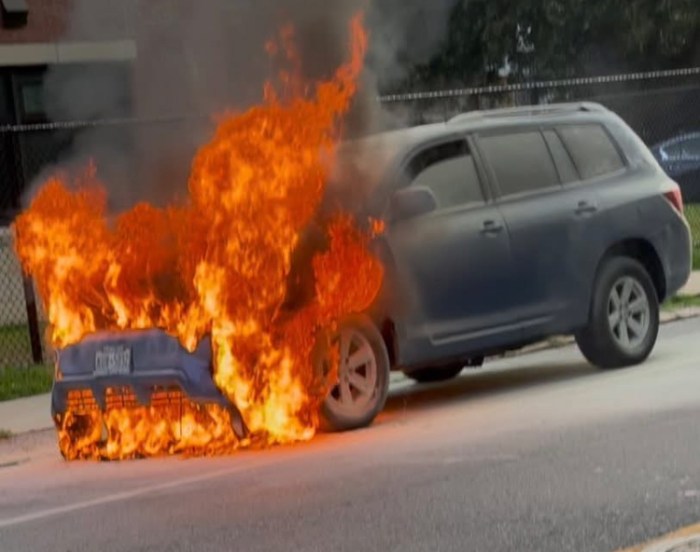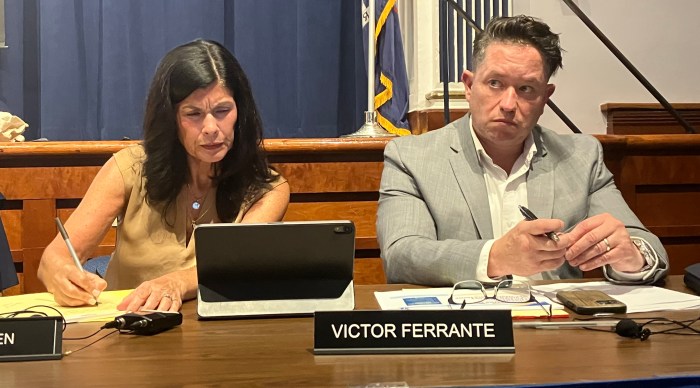Under Phase I, 20 Intersections to Be Equipped by September 1
In conjunction with National Stop on Red Week (Aug. 2–8), Nassau County this week launched Phase I of its red light camera program. In April, Governor David Paterson signed the state legislature’s red light camera bill into law and authorized the installation of up to 50 cameras at various intersections. On Aug. 6 at 12:01 a.m. the first of three were activated.
According to officials, the locations of the cameras were chosen after analyses of automobile accidents were conducted by Nassau County’s Police and Public Works Department; American Traffic Solutions (ATS), the red light camera vendor, reviewed the intersections for viability.
The red light cameras are triggered when an automobile drives over a sensor in the ground that has been placed a certain distance from the traffic light. The camera will take digital images of a vehicle’s license plate as it runs a red light and a citation will be sent to the vehicle’s registered owner. The driver will not be penalized with points and therefore plea bargaining will not be permitted; however, drivers will be permitted to a hearing should they wish to have one.
“We have placed these cameras at the county’s highest risk intersections. These red light cameras will improve both driver and pedestrian safety. They will deter drivers from speeding through intersections and posing a serious danger to everyone on the road,” Suozzi said. “This will help us reduce the number of car accidents, deaths, and injuries, and it will give us the tools we need to go after reckless drivers who put others at risk. I thank the members of the county and state legislature who pushed this important initiative forward.”
Tickets will cost red light runners $50, which is expected to bring in $4 million in total revenue to the county for the remainder of this year and $20 million next year. Nassau legislators approved the measure in an effort to ward off $12 million worth of service cuts. Essentially, the revenue from ticketing red light runners could help the county get out of its financial hole while significantly reducing vehicular accidents.
“In an effort to keep the red light camera program focused on driver safety rather than revenue generation, we want you to know exactly where the county is placing the cameras in your neighborhood,” Legislator Rich Nicolello said. “Please be sure to obey all traffic regulations and stop carefully for all red lights at all times to ensure your safety and the safety of others.”
Effective Aug. 6, the following three intersections included in Phase I were equipped with red light cameras: Stewart Avenue and Central Avenue in Bethpage; Merrick Road and Park Boulevard in Massapequa; and Atlantic Avenue and Lawson Boulevard in Oceanside. The remaining 17 intersections in Phase 1 will be equipped with live red light cameras Sept. 1. Phase 2, the second group of 20 intersections, will be complete by Dec. 1 and the final 10 intersections will be complete by mid-January 2010.
A website to promote awareness of where the cameras are located was created and drivers can view an up-to-date list of intersections as well as other helpful information about the red light camera program in Nassau County online at http://www.nassaucountyny.gov/agencies/TPVA/rlc-intersections.html.
According to a 2007 report by the National Highway Traffic Safety Administration (NHTSA), almost 900 people were killed and an estimated 153,000 injured nationwide as a result of people running red lights. Additionally, one person dies from every 100 red light related accidents.
“State and local agencies have found that the use of red light cameras can reduce red light running by motorists and, more importantly, reduce the number of crashes attributable to red light running,” said Thomas M. Louizou, regional administrator for the United States Department of Transportation – NHTSA Region 2. “The reduction in the number of crashes is especially important as crashes caused by motorists running red lights are, on the average, more deadly and damaging than other types of crashes at signalized intersections.”
Louizou added, “NHTSA applauds Nassau County for the innovative use of technology to make our roads safer for all highway users.”
James Tuton, president and CEO of ATS, said that through the implementation of a red light camera program, “Nassau County is demonstrating its commitment to innovative and cost-effective solutions to save lives while enforcing traffic regulations.” According to Tuton, “ATS shares that commitment and is excited to be Nassau County’s partner in providing a law enforcement tool that is proven to improve roadway safety by reducing the crashes, injuries and fatalities related to red-light running.”
Prior to passage of the bill in Nassau, New York City was the only municipality in the state with Albany’s permission to install red light cameras – and the results have been dramatic. The city reported a 73 percent drop in violations between 1994, when the cameras first went up, and 2005. Additionally, the city reported a 41 percent reduction in collisions and 35 percent drop in vehicular fatalities. Philadelphia, which also has red light cameras, reported a 72 percent reduction in violations between March 2005 and July 2006.
“The Insurance Institute for Highway Safety estimates that red light runners are responsible for an estimated 260,000 crashes each year in the United States, of which 750 are fatal. There is substantial evidence that red light cameras deter red light violations, particularly where red light running is rampant,” said Robert Sinclair, media relations manger for the American Automobile Association (AAA).
“Further, surveys show that greater and greater numbers of motorists support the use of such devices. In fact, surveys conducted by our association indicate that nearly 7 in 10 members favor the use of red light cameras to enforce red light violations. Our association has always held the view that visible law enforcement officers are the most effective means of deferring traffic violations. At the same time, however, we have recognized the potential of red light cameras to perform critically important enforcement functions, thereby enhancing traffic safety.”
Shaded Sidebar


































